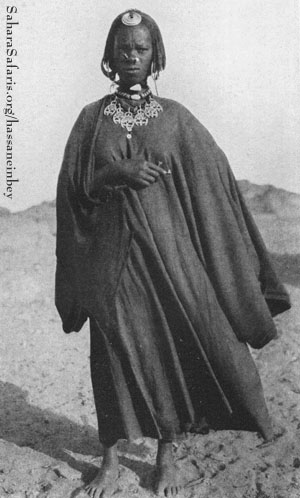
























|
A TRAGEDY NEAR ZIEGHEN
Near Zieghen there have been tragedies, because if
the traveler happens to go a little to the right or the left he will
miss the well and find no water, for here, as in some other places in
the desert, the well is not walled in with masonry, but is merely a
water hole. Often only a patch of damp sand indicates the presence of
water, and the guide will dig a little and find the well (see
illustration, page 243).
Three days from Zieghen there is an old landmark
called Garet El Fadeel. In the desert, whenever anything is named for a
man, it means a bit of tragedy. This man, El Fadeel, was one of the
finest guides between Jalo and Kufra. On his final journey he was
leading his caravan when a little sandstorm arose. He had trouble with
his eyes, so asked a companion to describe all the landmarks. They
mistook one, went to the west instead of to the east, and missed their
well. They realized their mistake too late. They tried to go to Kufra
but fell exhausted on the way. One camel escaped and finally reached
Kufra, where it had accustomed to graze. When it arrived the natives saw
a mark on its neck and knew it was Fadeel's camel. A search was begun
for the party, but it was of no avail. The men had died of thirst.
Curiously enough, fifteen years later this party's
luggage was found untouched, preserved by the sand.

A TEBU GIRL
The Bedouin style of her apparel and the
jewelry which she wears show the influence of Arab civilization on the
blacks of the desert. In her ears are silver earrings, her necklace is
of amber, and in her nose are bits of amber and coral. [photo page 250]
 
|
